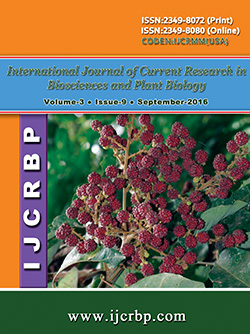 |
Online ISSN : 2349-8080 Issues : 12 per year Publisher : Excellent Publishers Email : editorinchiefijcrbp@gmail.com |
2Department of Plant Pathology, G.B.P.U.A.T., Pantnagar-263 145, Uttarakhand, India
Insecticide resistance and the demand for reduced chemical inputs in agriculture have provided a movement to the development of alternative measures of controlling insect pests. Myco-biocontrol offers an attractive alternative to the use of chemical pesticides. Entomopathogenic fungi are potential biological control agents mainly by reason of their wide host range, high reproductive capabilities, target specific activity, short generation time, and resting stage or saprobic phase producing capabilities that can ensure their survival for a longer time when no host is present. However, a primary requirement for the commercial use of entomopathogenic fungus as myco-biocontrol agents is the susceptibility of the insect and also the virulence of the fungus. They are naturally occurring organisms which are perceived as less damaging to the environment. The current paper could enlightened regarding the recent progress in the field of entomopathogenic fungi and their possible mode of action along with further improvement aspects for perceptive of myco-biological control of insect pests.
